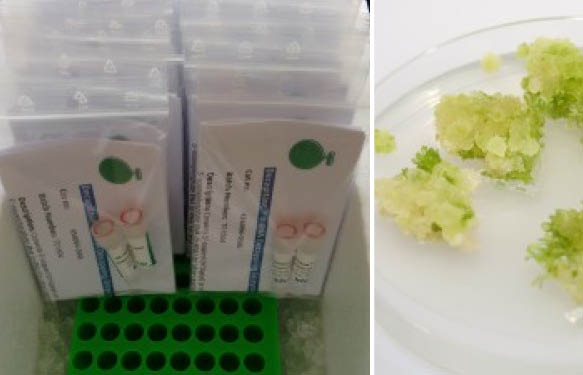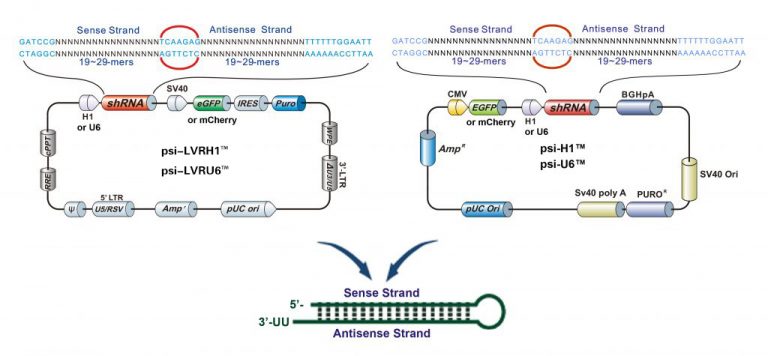We have been closely following the interesting case of the discontinuation of tobacco acid pyrophosphatase (TAP) and the efforts of the world’s RNA biologists to find a suitable alternative. Our previous post gives a bit of the background and discusses how protocols for 5′ RACE, transcriptional start site (TSS) mapping and GRO-Seq require a good decapping enzyme to remove cap structures from RNAs to allow oligocapping. Here we discuss two new commercial offerings to replace the discontinued TAP enzyme and show some user data comparing the 3 enzymes.
New commercial offerings
tebu-bio has developed a proprietary recombinant enzyme called Decapping Pyrophosphohydrolase that converts 5′-capped (m7GpppG or m2,2,7GpppG RNA) and 5′-triphosphate RNA (ppp-RNA) to 5′-monophosphate RNA (p-RNA) for oligo-capping or XRN1 exonuclease degradation.
CellScript offers Cap-Clip™ Acid Pyrophosphatase, which is a plant-derived enzyme (non-recombinant biochemical preparation) that hydrolyzes various pyrophosphate bonds, including the pyrophosphate bonds of the 5′-terminal m7 GpppG “cap” of eukaryotic messenger RNAs, as well as 5′ cap structures on many small nuclear RNAs (snRNAs), heterogeneous nuclear RNAs and some viral RNAs. Complete hydrolysis of such capped RNAs generates RNA that has a 5′-monophosphate group.
Genome-wide transcriptional start site mapping data (user data)
Two of the early users of tebu-bio’s Decapping Pyrophosphohydrolase (abbreviated Dpph) and Cap-Clip™ Acid Pyrophosphatase have shared some of there results with us comparing these enzymes to TAP for genome-wide transcriptional start site mapping. Shown here, are various mRNA 5′ ends on either the Watson (+) or the Crick (-) DNA strand mapping to known mRNAs in the yeast genome from duplicate libraries prepared with TAP, Decapping Pyrophosphohydrolase or Cap-Clip™ Acid Pyrophosphatase:

“By browsing the different tracks we basically do not see any difference between the 3 treatments. All look good.“, says Dr. Pelechano.
Similar conclusions were reached by researchers at the Pasteur Institute who shared these data with us:

Again this researcher reached the conclusion that all three enzymes gave essentially the same transcriptional start site mapping results. It should be noted however that some small differences were detected and that results obtained using Cap-Clip™ Acid Pyrophosphatase more closely correlated with those obtained using tobacco acid pyrophosphatase than did Decapping Pyrophosphohydrolase. In rare cases, such as that shown here, extra peaks were seen in the Decapping Pyrophosphohydrolase sample:

These extra peaks represent a tiny percentage of total reads, but likely do not represent true transcriptional start sites as these peaks generally map to the pyrimidine thymidine, and only 5% of mRNAs are believed to begin with pyrimidines. Taking a genome-wide look at low read transcriptional start site peaks reveals that Cap-Clip™ Acid Pyrophosphatase correlates with Tobacco Acid Pyrophosphatase almost as well as TAP technical replicates correlate. Decapping Pyrophosphohydrolase’s correlation with TAP is not as good suggesting that the plant-derived Cap-Clip™ Acid Pyrophosphatase more closely repoduces results obtained with TAP:

Future plans for Decapping Pyrophosphohydrolase
The superiority of Cap-Clip™ Acid Pyrophosphatase may come from one of many possible sources. One likely culprit is the presence of extremely small amounts of residual exonucleases in the bacterially-produced recombinant enzyme. Exonucleases could explain the extra peaks at thymidine residues and the additional low-read peaks. The plant derived enzyme buffers include EDTA which inhibits magnesium-dependent exonucleases, however adding EDTA is not possible for Decapping Pyrophosphohydrolase, which requires metals. Another possibility to explain the higher level of background signal relative to true transcriptional start site peaks could be reduced enzymatic activity in the Decapping Pyrophosphohydrolase prep. A new production of Decapping Pyrophosphohydrolase is currently underway to create a new lot of this enzyme that will be provided at a higher concentration and purity. For now, we recommend Cap-Clip™ Acid Pyrophosphatase for researchers wanting the highest quality replacement for TAP and Decapping Pyrophosphohydrolase as a less expensive alternative for European researchers.
*Note: Cap-Clip™ Acid Pyrophosphatase is available from the company CELLSCRIPT™ in the United States, Biozym in Germany and Austria, and tebu-bio in the rest of Europe.




One Response
A couple technical questions and answers that have come up for decapping pyrophosphohydrolase:
Question 1: The supplied 10X buffer contains a yellow/brown precipitate in it. Is this okay to use?
Answer: The oxidation of MnCl2 in the buffer will cause this color change and result in sub-optimal enzyme performance. If you want to be certain to have the highest quality buffer, you could make up some fresh using this formulation:
Components of 1X decapping buffer: 100mM NaCl, 2mM MgCl2, 2mM MnCl2, 1mM DTT, 10mM Tris-HCl (pH 7.5)
Question 2: A stop buffer which increased the pH to around 8 used to work to inhibit the TAP enzyme, will the same buffer will also work to inhibit Decapping Pyrophosphohydrolase?
Answer: It is unlikely that increasing the pH to 8.0 will completely block the enzyme’s decapping activity. Many protocols stop the decapping reaction by direct phenol-chloroform extraction. Also, it should be possible to inhibit Decapping Pyrophosphohydrolase by adding EDTA, which will also be effective at inhibiting metal-dependent exonucleases.